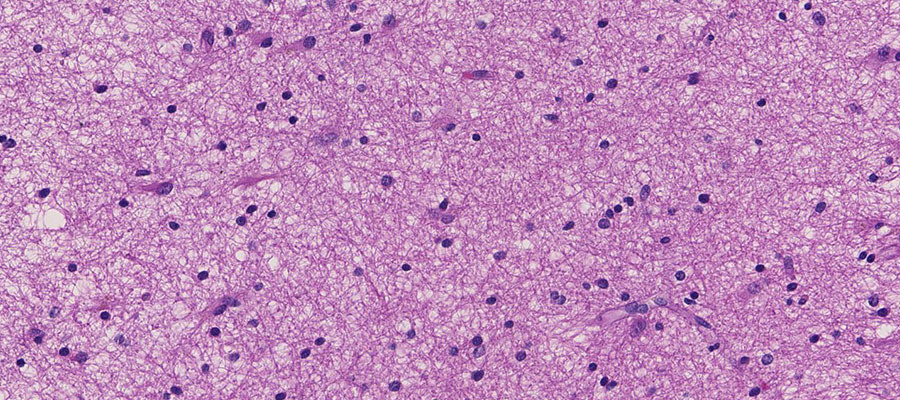Use of prognostic tool reveals benefit in negative sarcoma trial
26 Feb 2019
Results from the EORTC-STBSG 62931 trial of the effect of chemotherapy in high-risk soft tissue sarcoma situated in their limbs or in the trunk wall (the collection of muscles on the thorax, abdomen and back that surround most of the vital organs in the body), published in 2012, showed that giving chemotherapy to patients who had surgery did not improve their survival. However, revisiting the results using a prognostic nomogram – a tool that enables the calculation of the prognosis of individual patients – was able to identify a subgroup of treated patients who had better outcome.
Soft tissue sarcomas are a type of cancer that can develop in tissues such as fat, muscle, nerves and blood vessels. They can be found in any part of the body, though most start in the arms and legs. The efficacy of using chemotherapy for soft tissue sarcoma patients has been a subject of controversy for some time, with studies often showing conflicting results. Trials involving a small number of participants often showed a benefit, whereas larger studies tended not to.
“We wondered whether this difference could be due to the fact that larger studies had quite loose selection criteria for enrolling the patients and that they therefore tended to include patients with different disease characteristics,” said Professor Alessandro Gronchi, from the Istituto Nazionale dei Tumori, Milan, Italy. “We felt that the earlier EORTC study, the largest ever conducted to test the value of perioperative chemotherapy in patients with sarcoma, did not show a survival benefit for patients because it was burdened by wide variations in patient risk and prognosis. We also thought that a significant proportion of the trial participants were actually at low risk and this may have diluted the effect of chemotherapy for higher risk individuals, leading to a negative trial.”
Reanalysis* of the STBSG 62931 results by a team from five European countries using a specially devised nomogram, the Sarculator,- which was developed using predictive information of the tumour histology, the patient’s age, and other prognostic factors, to divide the patients into three groups: high, intermediate, and low predicted overall survival – showed a benefit in those where low overall survival had been predicted.
“The results of our study are interesting from a methodological point of view, as they showed that a trial which has been considered negative for years is not actually completely negative. This study did not change the results of the trial, which is not formally possible, but it offers a totally different view of the trial results. In broad terms, it underlines the importance of selection criteria when it comes to designing studies, “said Prof Gronchi.
“In future, I believe that it would be appropriate to consider a prognostic nomogram when a negative trial did not stratify patient prognosis, and where the intervention under investigation is expected to work differently across patients with different prognoses. In any event, it would be advisable to consider the prediction of patient prognosis beforehand. “
Running a trial in a rare cancer is difficult, because of the problems of finding sufficient eligible patients. This means that there can be a tendency not to stratify risks, and to include patients for whom one might expect the intervention to be less effective in order to make up the necessary numbers.
“We believe that our results show that future studies on chemotherapy for sarcoma should be conducted on homogeneous patient groups that can be selected with a prognostic nomogram such as Sarculator. It was the right tool to demonstrate that patients had wide variations in their expected survival, and that this had implications for the results of the trial. Our results can be considered practice-changing, in that they provide evidence supporting the use of chemotherapy for high risk sarcoma patients. These are very meaningful findings in the context of rare cancers,” Prof Gronchi concluded.
*The results are published in the European Journal of Cancer.
Related News
Meet the new EORTC Board
9 Jul 2024
We are pleased to announce the release of the EORTC 2023 Annual Report
17 Jun 2024
Dr Denis Lacombe, EORTC CEO, appointed stakeholder co-chair of ACT EU advisory group
24 May 2024
Clinical Trials Day 2024: a Q&A on pragmatic clinical trials
20 May 2024
EORTC/EMA workshop suggests an international way forward for treatment optimisation studies
8 May 2024
EORTC’s Participation at the ESTRO Congress 2024
29 Apr 2024
EORTC: Advancing research and treatment for rare cancers
29 Feb 2024
EORTC Fellowship Programme: celebrating more than 20 years of impactful collaboration
22 Feb 2024
Appointment of Malte Peters as EORTC Strategic Alliance Officer
9 Feb 2024
Unique series of workshops in partnership with the European Medicines Agency (EMA)
7 Feb 2024


